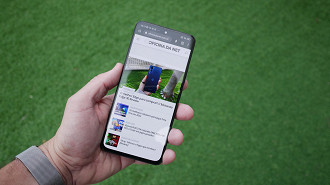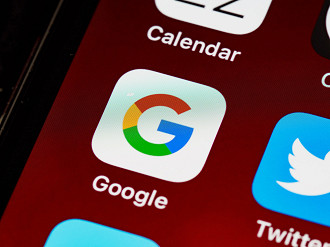There are several reasons why a user switches from an iOS system to an Android, either because they are fed up with the unnecessary bureaucracy of an iPhone, because of the difficulty in getting technical assistance, because of the high cost of related accessories or simply because of the need to take in new airs with a OS different. This post is intended to alert you, who are in the process of changing from an iPhone to an Android, about the possible perrengues and issues to consider during the adaptation phase with the new system.
1- Different categories of Android phones
One of the main arguments that Apple users use to classify Android phones as inferior is that Apple smartphones have high performance in 100% of cases, but this is a misinterpretation of the situation.
Apple only creates devices in the category Flagship, which are expensive devices with top-of-the-line hardware. As much as the company still makes lighter smartphones, as is the case with the iPhone SE, they are still considered Premium because they have the most recent, heavy and expensive processors.
In the Android world, things change, because we have three different categories (and within these categories, we have other smaller sub-classifications): entry-level, intermediate and top-of-the-line (Flagship). Entry devices usually cost in the range of R$ 800 to R$ 1,100.00, intermediaries range from R$ 1,700.00 and top of the line devices, which are the iPhone’s competitors, firm up above R$ 2,500.00.
2- Updates vary from brand to brand
Unlike Apple devices, Androids vary greatly in terms of timing and content of updates. A Samsung, for example, promises 3 major software updates (3 years) since the launch of the device, while other brands promise 5 and others only 2. This lack of constancy is something to pay attention to when acquiring your Android because , depending on the brand, you could be getting a bad deal.
3- Unpleasant ads
How do you think Xiaomi has the cheapest entry / mid-range smartphones of recent times, huh?
One of the most used methods lately to make products cheaper is to place advertisements embedded in the device’s interface. Honestly, it’s not as bad as it sounds, but we understand how unpleasant it can be for some “critical” users. These ads do not detract from the user experience and in many cases can be disabled in the settings menu.
4- Compatibility with payments
Due to the vast amount of partnerships that Google (owner of Android) has with other companies, it is very easy to integrate your credit card with Google Play and pay subscriptions and products directly there. It is also possible to log into various services with your Google account and, in those that allow it, pay directly, without having to register your data again.
5- Incompatibility with Instagram

The loss of quality in photos is noticeable on Instagram on Android. Due to the plethora of existing Android devices, it is impossible for social network developers to fully optimize the experience for each of them.
Poor quality app camera and filter defects are just some of the many downsides of using this App on a system other than iOS. Because of this, it may be necessary for you to take your photos with your smartphone’s native camera application, and then, from there, put the photo on your profile, avoiding the Instagram camera as much as possible.
6- Inability to use Apple Watch
One of the most useful accessories of recent years is certainly smartwatches. This small device that is attached to your wrist shows not only the time, but also your heart rate, number of steps, notifications and cell phone calls, among others. The thing is, however, that these features are only available to iPhone users, not the rest of the Android browsing population.
Apple Watch cannot connect to non-iOS devices, so you will have to settle for other smartwatch brands such as Huawei, Samsung, Xiaomi, etc.
It is still possible to use the Airpods quietly and without any problem.
7- Difficulty integrating with other devices
Leaving an Apple device, you must be used to the incredible interaction that all apps have with the device, making the ecosystem conversation much easier. What happens with Android smartphones is that, again, as there are so many devices, exact compatibility between all existing models is impossible, creating some difficulties in connecting one service to another.
8- Customization possibilities

We know that the latest iOS updates allow the addition of Widgets on the home screen, but it’s important to remember that Android systems have been doing this for at least 10 years. Customization has always been the strength of these smartphones and this is a positive point in the Android VS competition. iOS.
On a non-Apple operating system, you can modify the icons, wallpaper, fonts, colors, animations, etc. It’s an ocean of possibilities if you like to leave your devices with your personality/face.
9- Software and Hardware are not 100% compatible
Unlike the giant Apple, which produces its own processors, screens and cameras, the rest of the manufacturers have to seek their parts from different companies. For example: a Samsung smartphone may well have a processor created by Qualcomm, while everything else is produced and assembled by the Korean company itself.
The downside of this is that, as the parts are not made in the same environment, with the same manufacturing and programming method, Android cell phones have many differences between them, even when they use the same processor.
The only exception is Google, which produces smartphones with its own processor, allowing for more varied customizations and optimizations.
10- Freedom to install apps
All Android users use Google Play to download their apps, but what many don’t know is that it’s also possible to download and install apps outside of it. The Android system allows the user to install applications that are not in the official Google catalog, downloading them directly through the browser, through .apk files.
This freedom opens doors to application modifications, piracy and exclusive apps, but it does not protect the user from the numerous security measures that only Google’s application gallery has.
